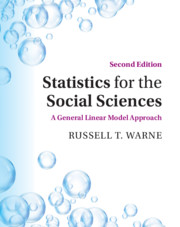Refine search
Actions for selected content:
36807 results in Cambridge Textbooks
Preface
-
- Book:
- Natural Language Processing
- Published online:
- 16 December 2020
- Print publication:
- 07 January 2021, pp xi-xiv
-
- Chapter
- Export citation
4 - Synthetic Storm and Design Discharge
-
- Book:
- Water Resources and Hydraulics
- Published online:
- 16 December 2020
- Print publication:
- 07 January 2021, pp 122-177
-
- Chapter
- Export citation
1 - Introduction
-
- Book:
- Water Resources and Hydraulics
- Published online:
- 16 December 2020
- Print publication:
- 07 January 2021, pp 1-9
-
- Chapter
- Export citation
15 - Neural Structured Prediction
- from Part III - Deep Learning
-
- Book:
- Natural Language Processing
- Published online:
- 16 December 2020
- Print publication:
- 07 January 2021, pp 343-369
-
- Chapter
- Export citation
3 - Watershed and Hydrologic Processes
-
- Book:
- Water Resources and Hydraulics
- Published online:
- 16 December 2020
- Print publication:
- 07 January 2021, pp 50-121
-
- Chapter
- Export citation
5 - A Perspective from Information Theory
- from Part I - Basics
-
- Book:
- Natural Language Processing
- Published online:
- 16 December 2020
- Print publication:
- 07 January 2021, pp 98-119
-
- Chapter
- Export citation
Index
-
- Book:
- Water Resources and Hydraulics
- Published online:
- 16 December 2020
- Print publication:
- 07 January 2021, pp 612-616
-
- Chapter
- Export citation
6 - Open Channel Flow and Channel Design
-
- Book:
- Water Resources and Hydraulics
- Published online:
- 16 December 2020
- Print publication:
- 07 January 2021, pp 239-307
-
- Chapter
- Export citation
Bibliography
-
- Book:
- Natural Language Processing
- Published online:
- 16 December 2020
- Print publication:
- 07 January 2021, pp 453-467
-
- Chapter
- Export citation
Preface
-
- Book:
- Water Resources and Hydraulics
- Published online:
- 16 December 2020
- Print publication:
- 07 January 2021, pp xi-xi
-
- Chapter
- Export citation
18 - Deep Latent Variable Models
- from Part III - Deep Learning
-
- Book:
- Natural Language Processing
- Published online:
- 16 December 2020
- Print publication:
- 07 January 2021, pp 423-452
-
- Chapter
- Export citation
10 - Unsteady-State Flow
-
- Book:
- Water Resources and Hydraulics
- Published online:
- 16 December 2020
- Print publication:
- 07 January 2021, pp 517-588
-
- Chapter
- Export citation
Part I - Basics
-
- Book:
- Natural Language Processing
- Published online:
- 16 December 2020
- Print publication:
- 07 January 2021, pp 1-2
-
- Chapter
- Export citation

Foundations of Comparative Politics
- Democracies of the Modern World
-
- Published online:
- 24 December 2020
- Print publication:
- 21 January 2021
-
- Textbook
- Export citation

Statistics for the Social Sciences
- A General Linear Model Approach
-
- Published online:
- 24 December 2020
- Print publication:
- 17 December 2020
-
- Textbook
- Export citation
2 - Levels of Data
-
- Book:
- Statistics for the Social Sciences
- Published online:
- 24 December 2020
- Print publication:
- 17 December 2020, pp 22-35
-
- Chapter
- Export citation
4 - Visual Models
-
- Book:
- Statistics for the Social Sciences
- Published online:
- 24 December 2020
- Print publication:
- 17 December 2020, pp 62-103
-
- Chapter
- Export citation
Examples
-
- Book:
- Statistics for the Social Sciences
- Published online:
- 24 December 2020
- Print publication:
- 17 December 2020, pp xvi-xx
-
- Chapter
- Export citation
14 - Chi-Squared Test
-
- Book:
- Statistics for the Social Sciences
- Published online:
- 24 December 2020
- Print publication:
- 17 December 2020, pp 410-455
-
- Chapter
- Export citation
1 - Statistics and Models
-
- Book:
- Statistics for the Social Sciences
- Published online:
- 24 December 2020
- Print publication:
- 17 December 2020, pp 1-21
-
- Chapter
- Export citation
